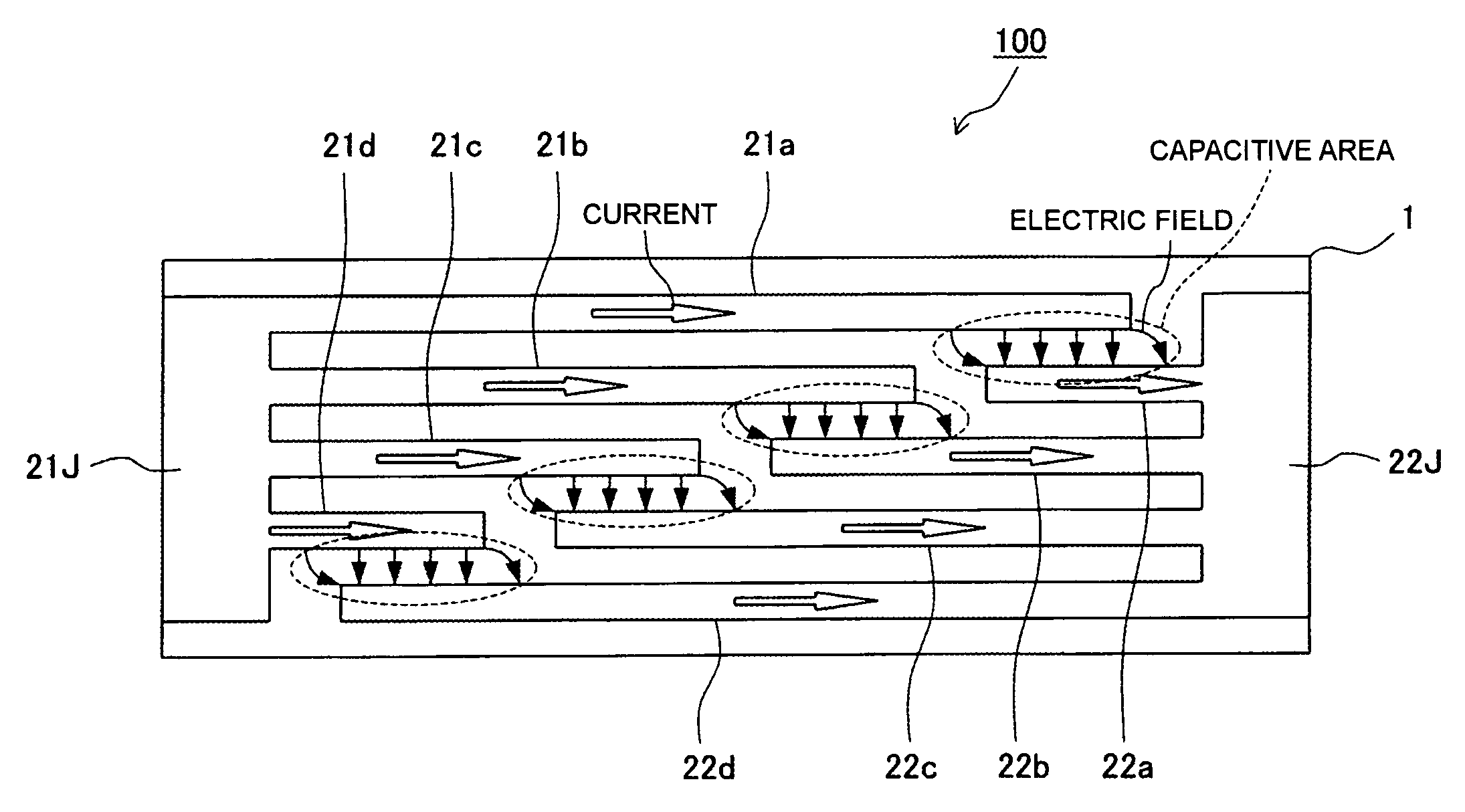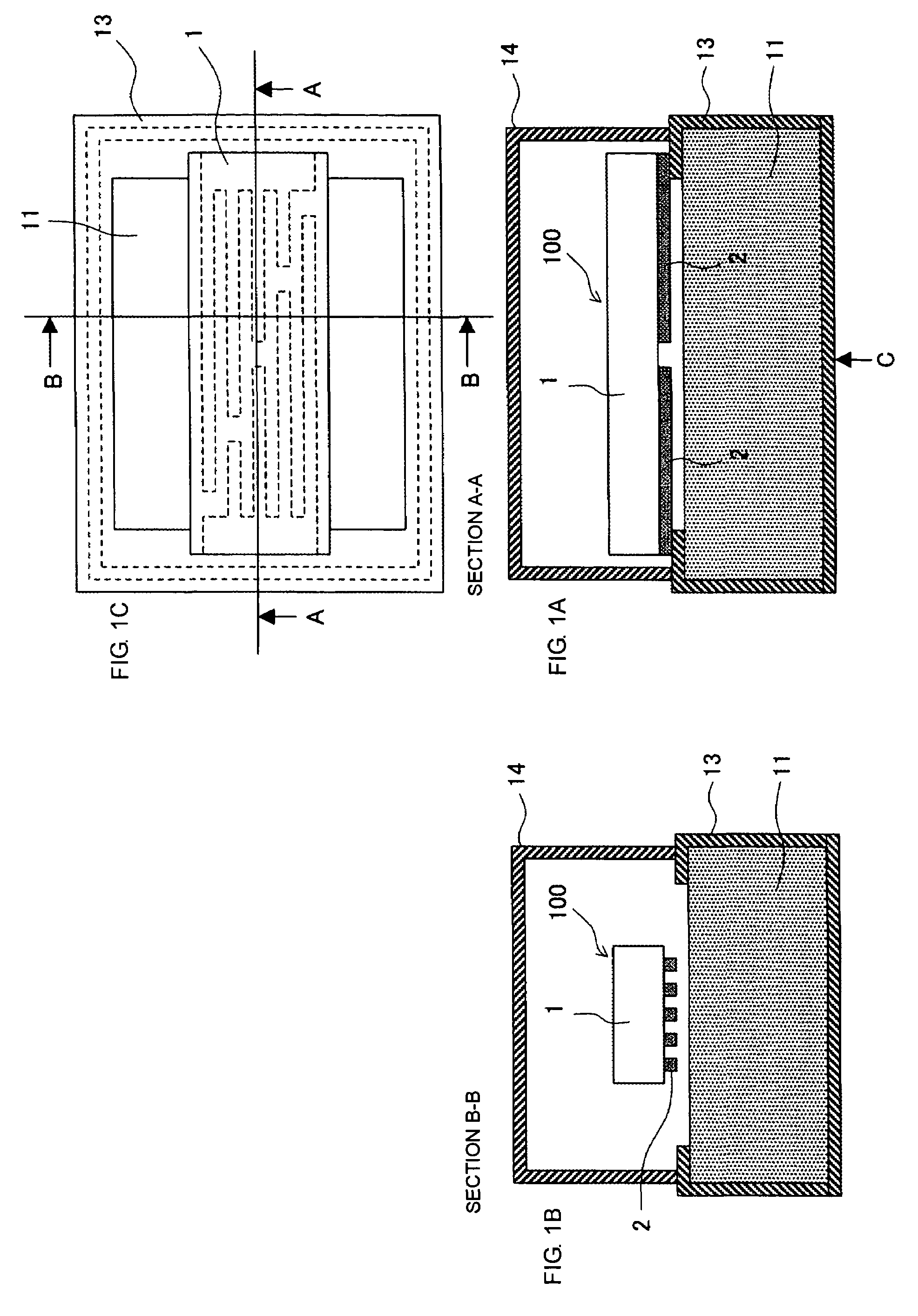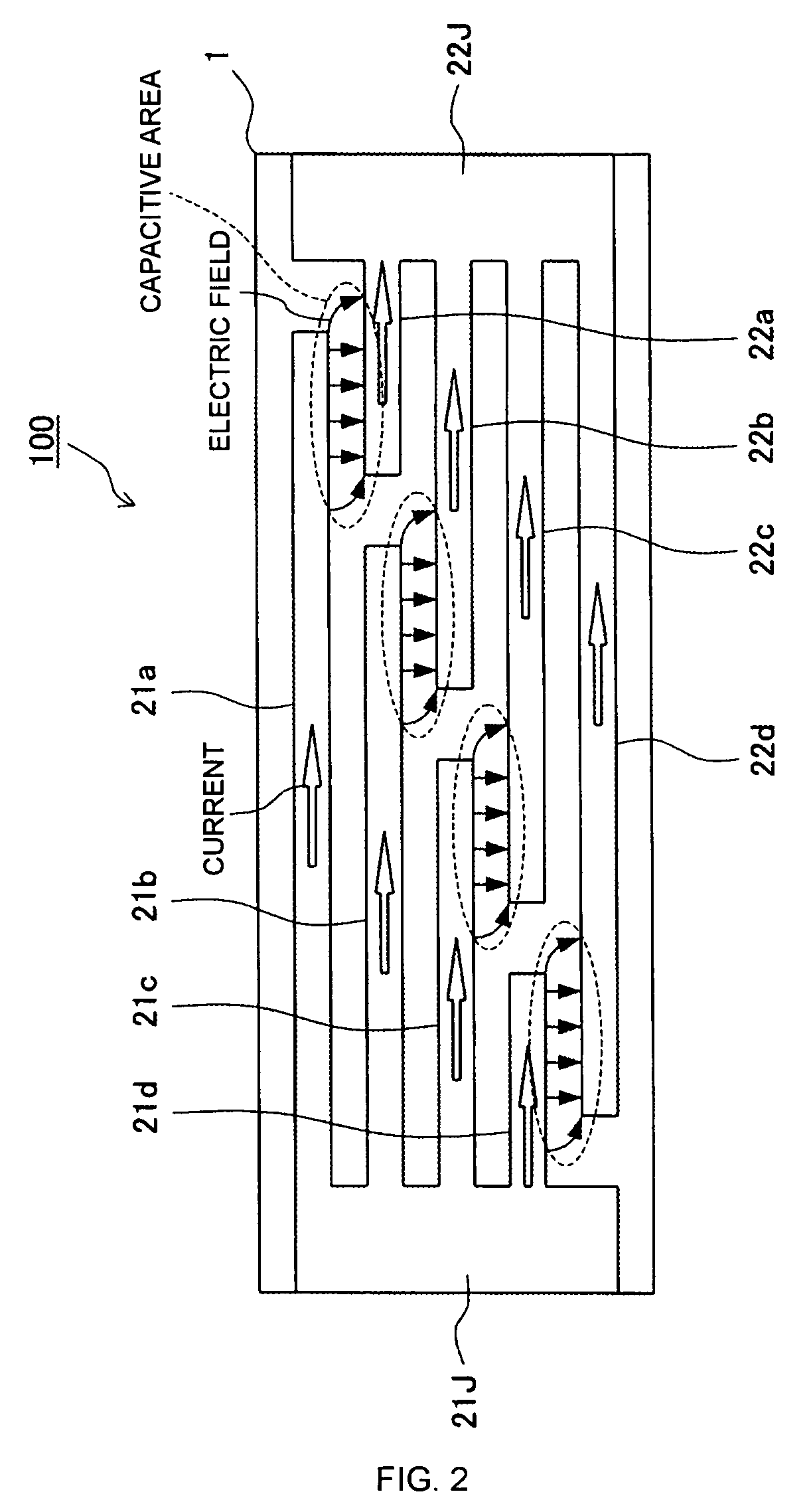Resonator device, filter, duplexer and communication device
a communication device and filter technology, applied in the direction of resonators, electrical equipment, waveguides, etc., can solve the problems of reducing the insertion loss of an rf transmission-reception portion, the inability of resonators with high no-load q (q0) to form, and the inability to form a resonator with high no-load q (q0). , to achieve the effect of reducing the loss of an rf transmission-
- Summary
- Abstract
- Description
- Claims
- Application Information
AI Technical Summary
Benefits of technology
Problems solved by technology
Method used
Image
Examples
first embodiment
[0059]FIGS. 1A to 1C show a resonator device according to the present invention. FIG. 1C is a top view of the resonator device with an upper shielding cap 14 removed, FIG. 1A is a sectional view taken on line A—A of FIG. 1C, and FIG. 1B is a sectional view taken on line B—B of FIG. 1C. This resonator device contains a dielectric substrate 1 having conductor lines 2 formed thereon, a mounting substrate 11 having a shielding electrode 13 formed thereon, and a shielding cap 14.
[0060]A high-frequency circuit element 100 is constructed by forming the conductor lines 2 on the dielectric substrate 1. No grounding electrode is formed on the surface of the dielectric substrate 1 opposite to the surface where the conductor lines 2 are formed. The high-frequency circuit element 100 functions as capacitive areas and a part of inductive areas. Furthermore, the shielding electrode 13 formed on the mounting substrate 11 and the shielding cap 14 function as a part of the inductive areas. The shield...
third embodiment
[0086]FIGS. 5A and 5B show a dielectric substrate used in a resonator device according to the present invention. In the examples shown in FIGS. 2 and 4, four capacitive areas are contained, but, in examples shown in FIGS. 5A and 5B, the number of capacitive areas is increased and the line width of each conductor line is made different. In the example shown in FIG. 5A, eight sets of conductor lines 21a to 21h and 22a to 22h and eight captive areas enclosed by broken lines in the drawing are formed. One end of these conductor lines 21a to 21h is commonly connected to the connection portion 21J and one end of these conductor lines 22a to 22h is commonly connected to the connection portion 22J.
[0087]FIG. 5B shows an example in which the number of neighboring end portions in the width direction of conductor lines, that is, the number of capacitive areas, are increased.
[0088]Furthermore, in the examples shown in FIGS. 5A and 5B, the width of the conductor lines are gradually reduced from ...
sixth embodiment
[0099]FIGS. 9A and 9B are a top view and a sectional view of a high-frequency circuit element 100 according to the present invention. In the example shown in FIG. 7C, the capacitive areas 30a to 30e are disposed substantially in the middle of the dielectric substrate 1, but, in the example in FIG. 9, the end portions of the conductor lines 22a to 22e are made close in the thickness direction to the connection portion 21J through a dielectric layer.
PUM
 Login to View More
Login to View More Abstract
Description
Claims
Application Information
 Login to View More
Login to View More - R&D
- Intellectual Property
- Life Sciences
- Materials
- Tech Scout
- Unparalleled Data Quality
- Higher Quality Content
- 60% Fewer Hallucinations
Browse by: Latest US Patents, China's latest patents, Technical Efficacy Thesaurus, Application Domain, Technology Topic, Popular Technical Reports.
© 2025 PatSnap. All rights reserved.Legal|Privacy policy|Modern Slavery Act Transparency Statement|Sitemap|About US| Contact US: help@patsnap.com



